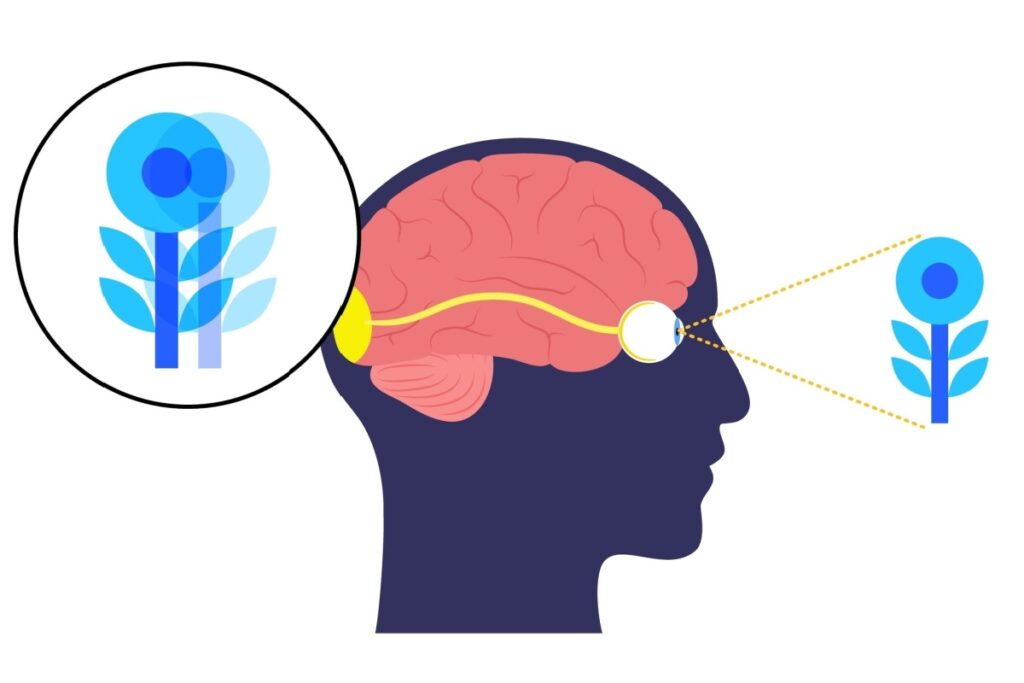You might notice your child squinting at the TV or covering one eye while reading. Maybe you’ve started experiencing headaches during computer work or double vision when you’re tired. These symptoms could point to eye misalignment — a condition where your eyes don’t work together properly to focus on the same point.
Eye misalignment happens when the muscles controlling your eye movements fail to coordinate correctly, causing one eye to turn in a different direction than the other. While this condition can develop at any age, recognizing its causes can help you identify when to seek treatment and what options might work for your family. Lifetime Optometric provides comprehensive testing to diagnose eye alignment issues, while Neurolens lenses offers relief from the symptoms that often accompany misalignment problems.
Common Causes of Eye Misalignment in Children & Adults
Eye misalignment happens when the muscles that control your eye movements don’t work together properly. Your eyes have six muscles each that need to coordinate perfectly to keep your vision aligned. Strabismus affects how these muscles work together, creating the misalignment you might notice in yourself or your family members.
Muscle & Nerve Control Problems
Your brain sends signals to control twelve different eye muscles — six for each eye. When these signals get disrupted or the muscles don’t respond correctly, misalignment occurs.
- Brain control issues affecting eye muscle coordination
- Weak or overly tight eye muscles
- Problems with the nerves that control eye movement
- Family history — about 30% of cases run in families
Medical Conditions That Affect Eye Alignment
Certain health conditions can damage the nerves or muscles responsible for eye movement. These conditions often develop later in life and can cause sudden-onset misalignment.
- Diabetes complications
- Thyroid eye disease (Graves’ disease)
- Brain tumors or neurological disorders
- Stroke (leading cause in adults)
- Head injuries affecting brain areas that control eye movement
Signs Your Eyes May Be Misaligned
Eye misalignment symptoms can appear suddenly or develop gradually. You might notice these changes in your daily activities, especially during tasks that require focused vision like reading or computer work. When you experience persistent symptoms, headaches and vision problems often connect in ways that comprehensive testing can reveal.
Vision Changes You Might Experience
When your eyes don’t align properly, your brain receives two different images instead of one clear picture. This mismatch creates noticeable vision problems that can interfere with everyday tasks.
- Double vision: You may see two images of a single object, especially when you’re tired or trying to focus.
- Intermittent blurry vision: Your vision may sharpen and blur throughout the day as your eyes struggle to work together.
- Difficulty reading or focusing up close: Words may seem to move on the page, or you may lose your place while reading.
- Poor depth perception: Judging distances can become challenging, making activities like driving, sports, or even walking down stairs feel less natural.
Physical Symptoms & Behaviors
Your body often tries to compensate for misaligned eyes by adjusting how you position your head or use your vision. These habits may help you see more clearly in the moment, but they can cause additional discomfort over time.
- Frequent headaches or eye strain: Your visual system works overtime to merge two different images, which can lead to tension around your eyes, temples, and forehead.
- Tilting or turning your head to see clearly: You might subconsciously adjust your head position to reduce double vision or improve clarity.
- Closing one eye when reading or viewing distant objects: Covering or closing an eye can temporarily eliminate double vision, but it’s a sign your eyes aren’t working together effectively.
- Feeling tired after visual tasks: Activities like reading, driving, or using digital devices may wear you out faster because your brain is constantly trying to correct the misalignment.
- Weakness or discomfort around your eyes: The muscles responsible for aligning your vision can become fatigued, leading to a heavy or strained feeling.

Different Types of Eye Misalignment
Your eyes can turn in different directions, and each type has its own characteristics and potential causes. The direction your eye turns helps doctors identify what might be causing the problem. Understanding these different patterns can also help you learn about the treatment options available.
Inward & Outward Turning
These are the most common types of eye misalignment. You might notice one eye drifting toward or away from your nose, especially when you’re tired, daydreaming, or trying to focus on a specific task.
- Esotropia — inward turning:
One eye turns inward toward your nose. This type of misalignment can make close work difficult and may cause eye strain or double vision, particularly during reading or screen time. - Exotropia — outward turning:
One eye turns outward, away from your nose. This may happen consistently or only when you’re tired or not paying close attention, and it often leads to headaches, squinting, or trouble focusing.
Vertical Misalignment
Vertical misalignment occurs when one eye sits higher or lower than the other. This type often causes noticeable head tilting as your visual system tries to line up the images from each eye.
- Hypertropia — upward turning:
One eye turns upward compared to the other. People with hypertropia may experience double vision, head tilting, or difficulty judging distances. - Hypotropia — downward turning:
One eye turns downward. This can create visual confusion, fatigue, and a strong tendency to close one eye to see more clearly.
How Neurolens Can Help Your Eye Alignment Issues
Many people with eye misalignment also experience digital eye strain, neck tension, and posture-related discomfort. These symptoms might connect to trigeminal dysphoria, when your visual system struggles to work properly together, affecting the trigeminal nerve that controls sensation in your face and head. Neurolens technology addresses these issues by correcting subtle misalignments that traditional glasses can’t fix.
Comprehensive binocular vision testing can identify whether your eyes work together effectively and measure small misalignments that standard eye exams might miss. If testing reveals eye alignment issues, specialized Neurolens lenses might help reduce your headaches, neck tension, and eye strain by correcting how your eyes work together during daily activities.
Our team at Lifetime Optometric offers comprehensive eye exams and advanced treatments like Neurolens to help families in Fresno address eye alignment issues. Whether you’re experiencing symptoms that might relate to eye misalignment or need specialized vision testing, you can schedule a consultation to discover what’s causing your symptoms and explore treatment options that fit your family’s needs.


